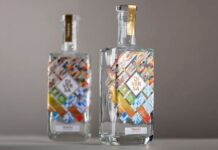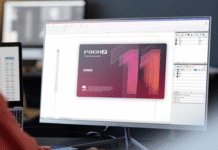
There is an almost 100% probability that you have stopped to read this piece before anything else in this publication – due to the announcement above. Getting something-for-free is an offer few people know how to pass up. Most of us walk down the aisles of shops with eyes peeled for those much sought after ‘FREE’ graphics – which can be spotted in bold-font as stars or stripes or stickers or many other innovative styles. For most of us, it also helps to make the tedious chore of daily shopping an exciting treasure hunt!
In fact, adding excitement to everyday products with the help of ‘offer packaging’ has emerged as a key driver to create volume sales and traction in a competitive and crowded marketplace for brands. The cheerful old ‘combo- offer’ with its buy-one-get-one-free promise has already established its place firmly on shop-shelves. Its irresistible lure is evident from the fact that it has even moved beyond packaging to find its place in fast-food parlors (‘buy a burger and get a cola free’) and even to airline ticket offers – ‘spouse travels free!’ The key advantage of the ‘combo offer’ of course is that it is simply a discounting process and poses the least challenge in terms of packaging design or development. For this reason, it is also the easiest to implement or recall over short spurts of time depending on the sales response. There are times however when the products on ‘combo offer’ need to be bundled – with shrinkwraps or printed tape – to facilitate point-of-sale retail handling – as is often seen for soaps and toiletries. Such bundling ideally needs to be done at the key distribution warehouse hubs instead of the production units in view of the temporary nature of the offers. This can lead to a need for additional manpower at the warehouses as well as inventory management complexity but it prevents disruption at retail check-out points or unhappy customers who fail to receive their free-offer.
The most efficient way, however, to create ‘offer products’ is to pre-pack them at the production unit itself instead of disrupting the warehouse or retail store operations. Very often this can involve merely the additional filling of 25-30% product plus a change of print artwork to include the 25%-extra-free announcement. Such changes can easily be carried out in package formats that have spare extra ullage space such as tube packs or FFS flex-laminate packs. Another popular format is to group smaller individual packs into a larger offer pack such as a carton or jacket-sleeve.
This is comparatively easy to do also but it adds an item to the bill of quantities (BOQ) and creates additional packaging material inventory and adds cost to a product, which is actually to be discounted! For rigid packs with optimized over-flow capacity, however, additional content packing can only be achieved by creating new tooling or modifying the existing one. Such tooling modification can seldom be viable from a cost point of view and is therefore seldom seen – unless the extra-pack has to be of a lasting nature and is needed in desperation to spur sales!
The magic of offer pricing
In the end, it might be important to add – as a 25% extra – that creating an ‘offer pack’ is nowhere as difficult as ‘getting the pricing right.’ Hitting the right price-point has less to do with hard logic and a lot more to do with what seems like magic. The right price can make all the difference. Price too low and you miss out on profit. Price too high and lose out on sales. Over decades of modern marketing, several experts have tried to understand the apparently weird and irrational behavior of shoppers. What makes them buy more when moving in a counter-clockwise direction in a store? How does removing a Dollar (or Rupee) sign from the price-tag help to increase sales? What is the magic of the number 9 that makes people buy a product for Rs. 99 but not Rs.100? (Music could be downloaded free till Steve Jobs convinced users to pay – by charging 99 cents!) How is it that when ‘old price’ is marked alongside the ‘discount price’ then it outsells even prices ending with 9? Why do prices marked in small type-face sell more than those marked in large, bold type-face? Why does a Rs 2,000 wristwatch selling next to a Rs 12,000 watch make the former look more reasonably priced? (See: http://conversionxl.com/ pricing-experiments-you-might-not-know-but-can-learn-from/ — for more fascinating insights about the mysteries of pricing right.)
Indeed, the success or failure of offer priced products appears to lie less in the 25% Extra-Free content of the tube or pouch and more in the limitless mysteries of the human mind.
This article was first published in the August 2014 print issue of Packaging South Asia.











